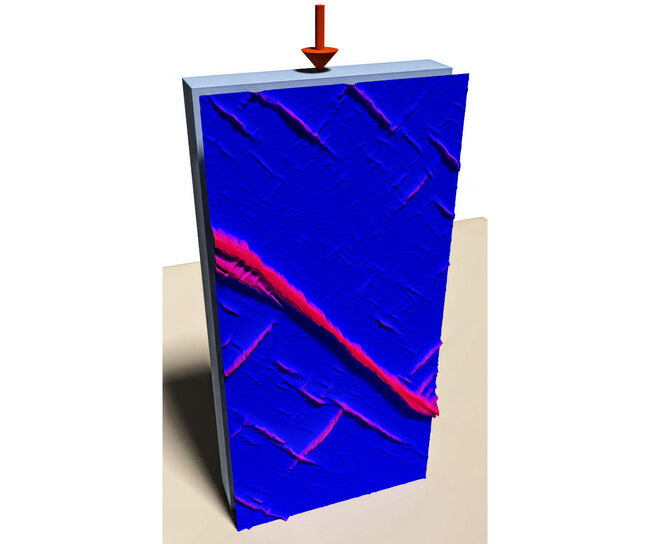Véronique Dansereau, Vincent Démery, Estelle Berthier, Jérôme Weiss, and Laurent Ponson
The Mohr-Coulomb criterion describes well the level of compression that an heterogeneous material such as rock or ice can bear before failing. It can be extented to predit the orientation of the crack that propagates through the sample. Conversely, the orientation of the fault has been widely used in geosciences to infer the level compression when the material failed. However, we have shown using numerical simulations that the prediction of the orientation was completely wrong, even for weakly homogeneous materials. Describing the formation of the crack as a collective process involving elastic interactions between the elements that fail, we could predict its orientation.
Phys. Rev. Lett. 122, 085501 (2019)


